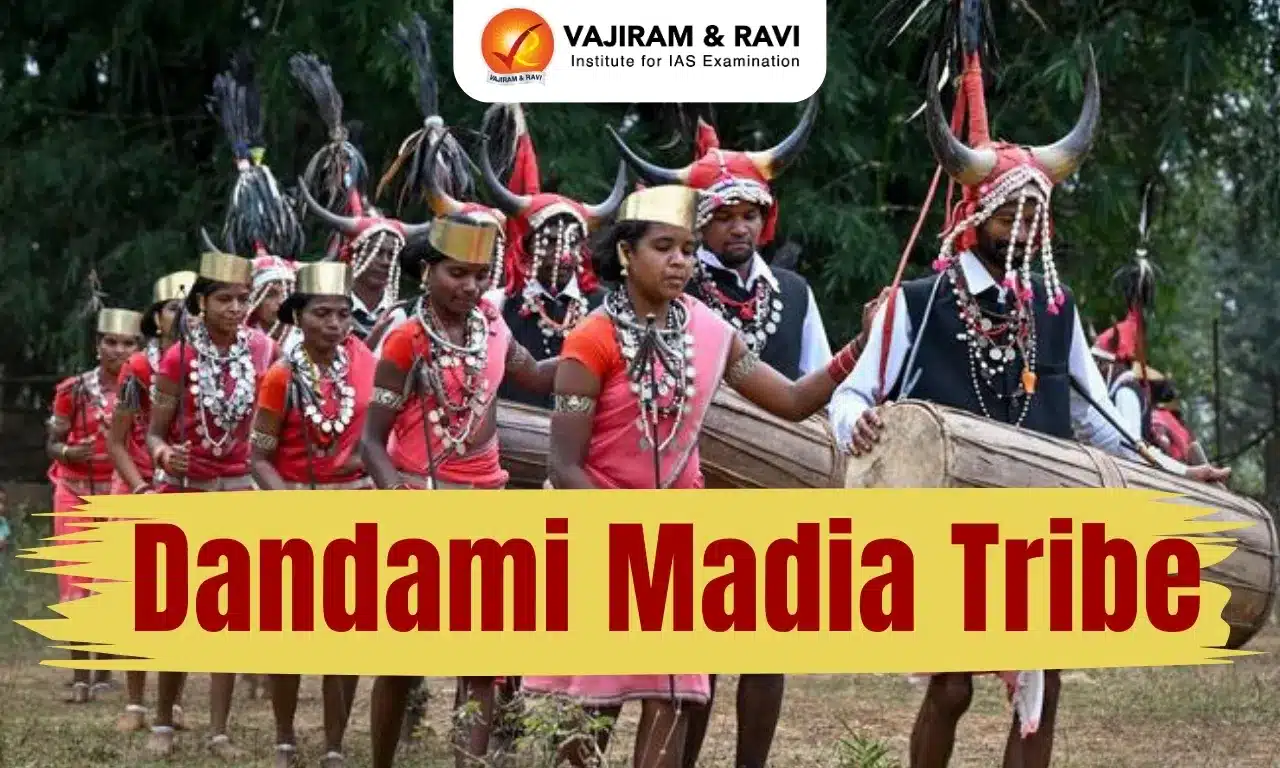Kathak Latest News
Renowned Kathak dancer Kumudini Lakhia passed away recently at the age of 94.
About Kathak
- The term Kathak is derived from the Sanskrit word ‘Katha’, meaning ‘story’.
- Nature of Performance: It originated as a temple performance where stories from scriptures were enacted and evolved into a court dance during the Mughal period.
- Major gharanas (schools): Prominent gharanas include the Lucknow, Jaipur, and Benaras gharanas.
- Dance style: Focus is on footwork (Tatkaar), pirouettes (Chakkars), mudras, and facial expressions. Dancers wear ankle bells (ghungroos) and perform with graceful yet intricate movements.
- Musical association: It is the only classical dance form linked to Hindustani (North Indian) music.
- Mughal influence: Under the Mughals, Kathak was transformed into a refined court art, emphasizing grace and intricate rhythmic patterns.
- Patronage: Wajid Ali Shah, the last Nawab of Awadh, played a major role in its artistic development and patronage.
- Prominent exponents: Key figures include Birju Maharaj, Sitara Devi, Shovana Narayan, and Aditi Mangaldas.
Kumudini Lakhia Contributions
- Kumudini Lakhia challenged the classical notion that Kathak must always revolve around storytelling based on mythological or literary themes like Radha-Krishna or Shiva-Parvati.
- She believed in “art for art’s sake”, focusing on movement, rhythm, and form over narrative content.
- Over a career spanning seven decades, she transformed Kathak from a solo narrative-based art form to a group ensemble format, incorporating contemporary themes and abstract concepts.
- Awards and Recognition: She was conferred Padma Shri in 1987, Padma Bhushan in 2010, and Padma Vibhushan in 2024 for her outstanding contribution to Indian classical dance.
Kathak FAQs
Q1: What is Kathak?
Ans: A classical Indian dance form from North India, blending Hindu and Mughal traditions, characterized by intricate footwork, spins, and storytelling.
Q2: Name its key elements.
Ans: Tatkar (footwork), Chakkar (spins), Abhinaya (expression), and rhythmic synchronization with instruments like tabla and sarangi.
Q3: What are its major gharanas?
Ans: Jaipur, Lucknow, and Banaras gharanas, each emphasizing technical precision, grace, and devotional themes, respectively.
Source: IE
Last updated on December, 2025
→ Check out the latest UPSC Syllabus 2026 here.
→ Join Vajiram & Ravi’s Interview Guidance Programme for expert help to crack your final UPSC stage.
→ UPSC Mains Result 2025 is now out.
→ UPSC Notification 2026 is scheduled to be released on January 14, 2026.
→ UPSC Calendar 2026 is released on 15th May, 2025.
→ The UPSC Vacancy 2025 were released 1129, out of which 979 were for UPSC CSE and remaining 150 are for UPSC IFoS.
→ UPSC Prelims 2026 will be conducted on 24th May, 2026 & UPSC Mains 2026 will be conducted on 21st August 2026.
→ The UPSC Selection Process is of 3 stages-Prelims, Mains and Interview.
→ UPSC Result 2024 is released with latest UPSC Marksheet 2024. Check Now!
→ UPSC Prelims Result 2025 is out now for the CSE held on 25 May 2025.
→ UPSC Toppers List 2024 is released now. Shakti Dubey is UPSC AIR 1 2024 Topper.
→ UPSC Prelims Question Paper 2025 and Unofficial Prelims Answer Key 2025 are available now.
→ UPSC Mains Question Paper 2025 is out for Essay, GS 1, 2, 3 & GS 4.
→ UPSC Mains Indian Language Question Paper 2025 is now out.
→ UPSC Mains Optional Question Paper 2025 is now out.
→ Also check Best IAS Coaching in Delhi

















